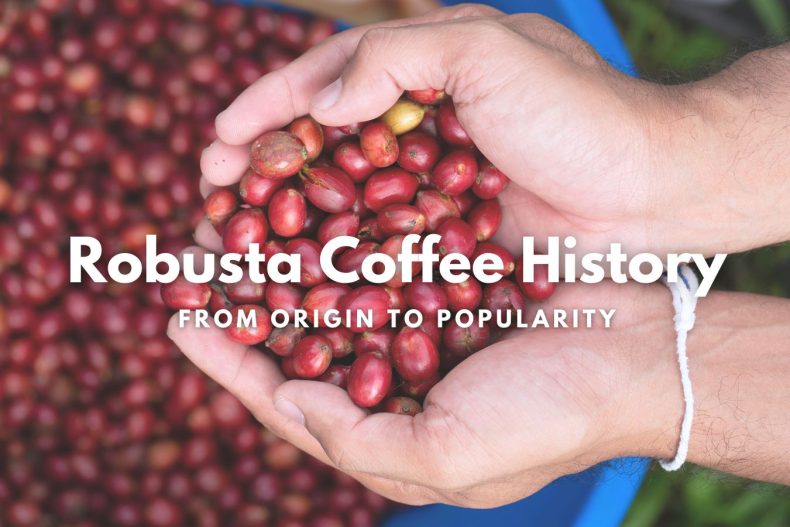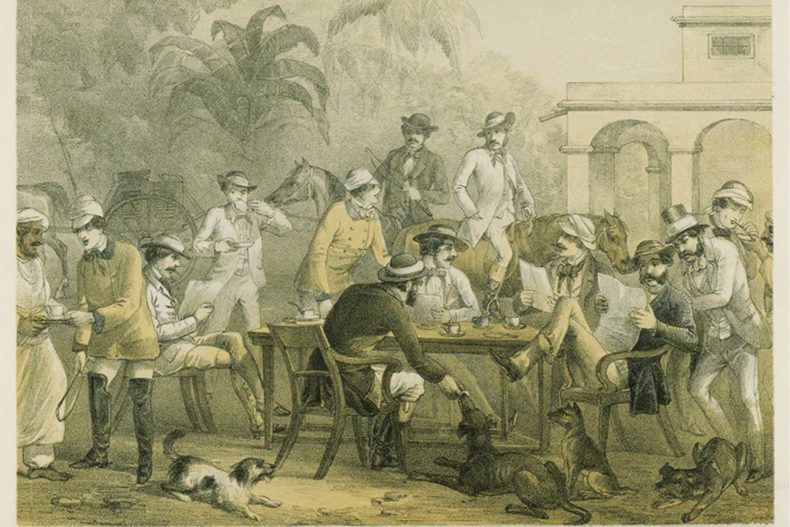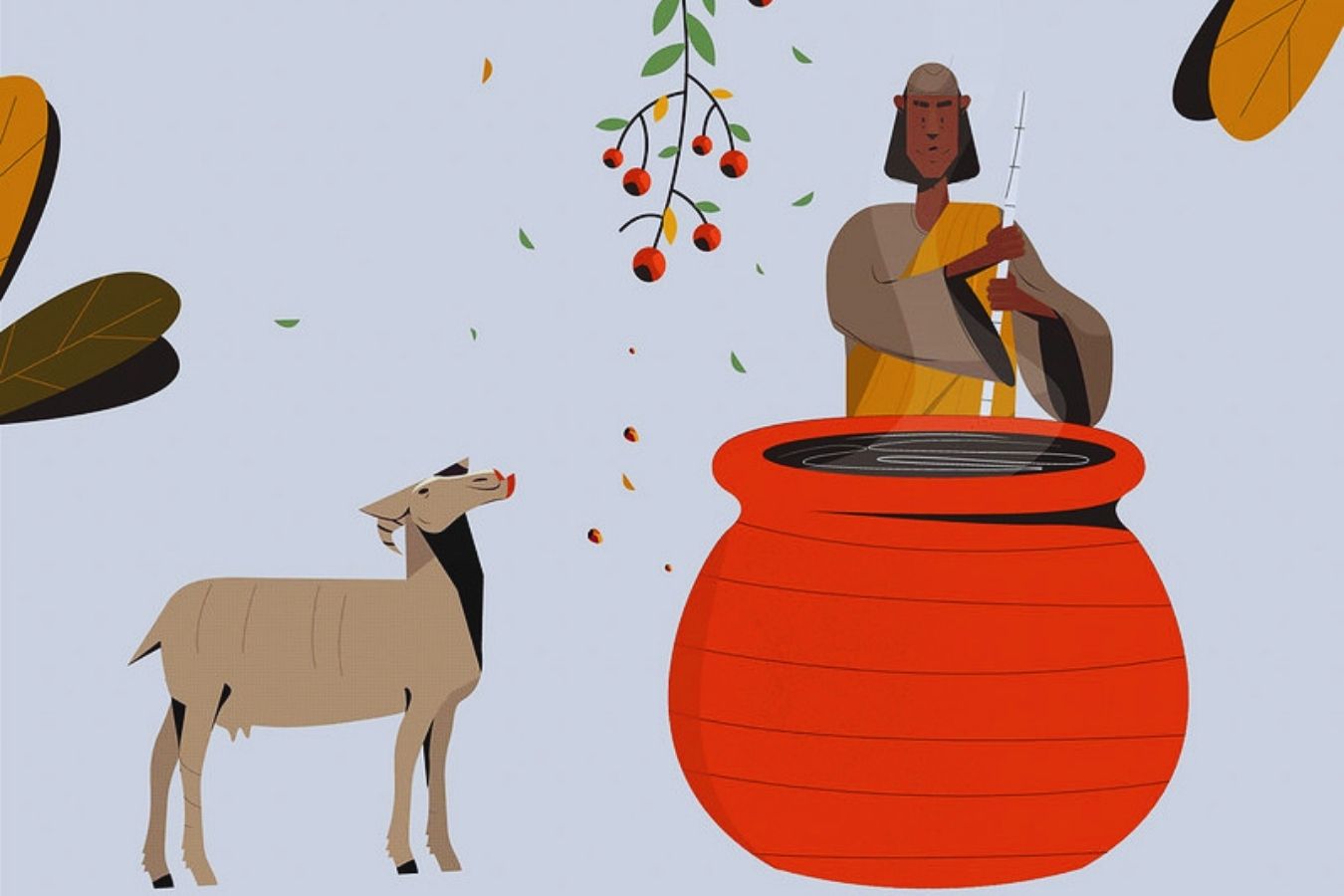
Coffee, wine and beer are all the same – they all have a long history. But instead of being told like beer and wine, coffee makes history
The “Silk Road” in the history of coffee discovery – trade is something that never ceases to engage with thrilling stories.
First discovery
There is a commonly circulated but unproven story about Kaldi, a goat herder, who once observed the goats in the herd chewing coffee berries and excitedly running around, fighting with each other.
In his excellent judgment, Kaldi gave the goats that had chewed the fruit to help them feel energized. Kaldi took the cherries to a local monastery, where monks threw them into the fire. Instead of burning the “evil medicine”, the fire accidentally toasted them, creating the first cup of coffee.

This story has proven to be the tree’s birthplace, likely in Ethiopia or Yemen. And the word (coffee) sounds similar to the Kaffa region of Ethiopia, making history defiant to admit that the term coffee originated there.
Beginning around 600 AD, the men of some nomadic tribes drank a mixture of ground coffee with buttermilk to invigorate before battles. Muslim monks (before Islam released an “official” statement) used crushed cherries before praying all night.
Kevin Sinnott, 2010
Coffee and Religious Encounter
Coffee is not always widely welcome. The cults start with doubt & prohibition before allowing the use of this drink. Islam has struggled with it before; A drink considered alcohol – banned for euphoria, but not intoxication before it was recognized as a mild, nutritious, refreshing alternative to alcohol. Coffee then won and prevailed throughout the Muslim world.
Coffee was first heated and used as a beverage probably around the tenth century in Turkey, where beverages brewed with herbs and tea became popular. With its proximity and active trade with Europeans, Turkey helped coffee spread into the European Christian world.
The Catholic Church, which rarely goes into control over dietary matters, has been caught up in whether Christians should indulge in the new drink. And as he tried to find an answer, the current Pope, Clement VIII, took a sip of his coffee. He immediately declared coffee a delicious and healthy drink for Christians.
Jewish law, which often states to abstain from a variety of foods (in accordance with religious rules and customs), however coffee is permitted.
Kevin Sinnott, 2010
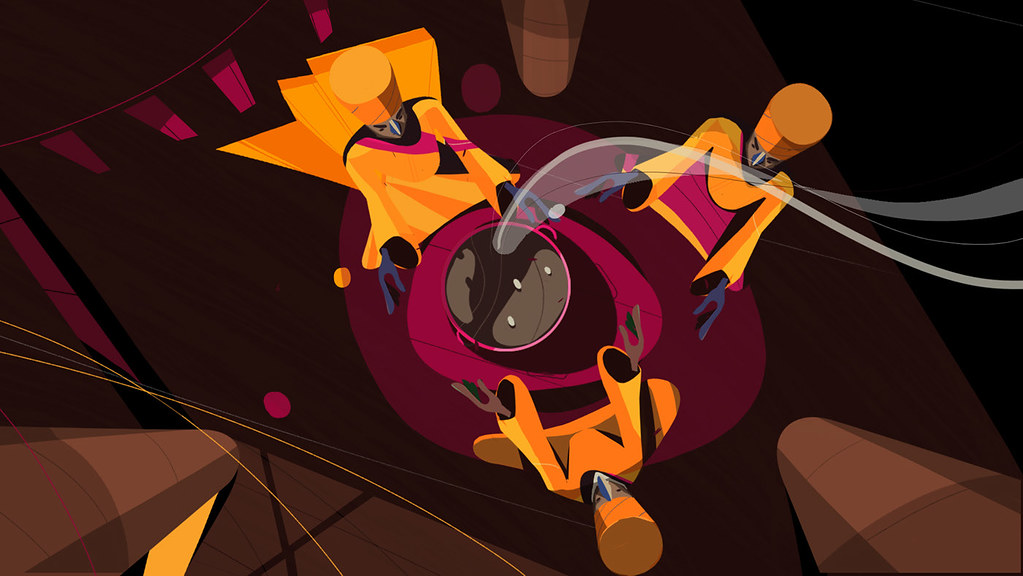
Popular in the religious world
The 16th century brought the world’s first coffeehouses – from Arabia, spreading across all continents. With the church’s permission, people can now enjoy coffee without fear of persecution.
These public places, known as “Kaveh Kanes”, provide Muslim men with a public space to congregate. Similarly, coffee shops are where people unite and promote business and political activities in Europe. With the growing popularity of coffee, so makes its impact.
In the 1500s, the Turks valued coffee so much that a woman could divorce her husband for not providing her with coffee; It is considered as important as food and shelter.
Kevin Sinnott, 2010
The Secession of the Arabian Peninsula
In the late 1600s, coffee – all from Yemen and Ethiopia – was the drink of choice for Europeans. But with the explosion of shipping and colonialism at its peak, countries wanted to control their coffee-drinking destiny by sourcing beans from their “backyards”.
This control means independence and gives birth to a new industry. The Dutch first implemented this idea in the mid-1600s.
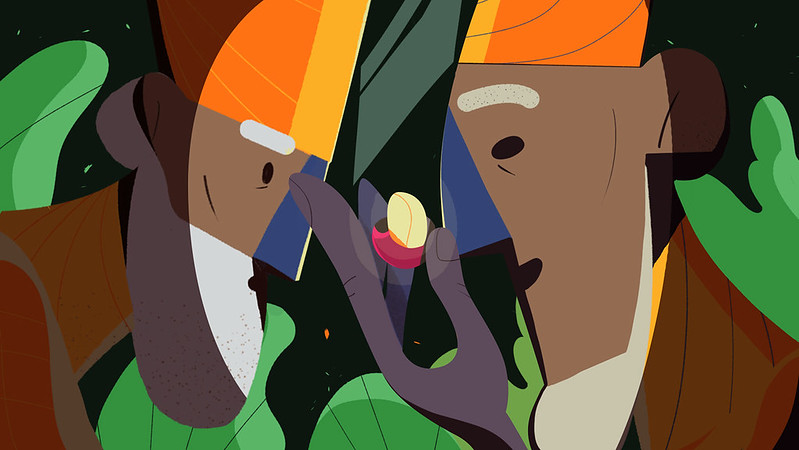
When they gained control of Ceylon (present-day Sri Lanka) in 1658, they began to develop a large-scale coffee industry there; they finally had land to grow coffee. In 1699, Dutch colonists brought coffee from India to Java, starting production in Indonesia.
However, the Dutch did not protect their coffee branches as carefully as possible; they kept some in the Amsterdam Botanical Garden and even intended to give them to other European countries as gifts.
Atlantic Expedition
And indeed, the Dutch shocked historians with their generosity, which King Louis XIV of France once noted. Louis brought the coffee plant, a gift from the Dutch government in 1714, to the French colonies in the New World.
The infantry officer, Captain Gabriel Mathieu de Clieu , was in charge of carrying the cuttings to the French colonies. This is no easy task. A challenging sea journey becomes almost impossible combined with trying to keep a tree alive on board.
De Clieu detailed the battles in his diary with pirates, rainstorms, drought and heat, and also the dissidents on board. But with that, he also had to share his rare water rations with this young coffee plant.
Kevin Sinnott, 2010
When the boat arrived at Martinique, the site chosen to plant France’s first tree, de Clieu had to keep this unique coffee tree alive and well. He succeeded while encouraging local farmers to produce coffee rather than cocoa, their main crop.
King Louis honoured this man with the governorship of Martinique. Meanwhile, cuttings from de Clieu’s coffee tree spread. Before long, all the neighbouring Caribbean islands were cultivating coffee, and a new industry was born.

The fact that Brazil captured the precious coffee tree to build its empire is equally impressive. In some accounts, a Brazilian lieutenant lured the wife of the governor of French Guiana to obtain a coffee plant that was allegedly hidden in a bouquet. This plan, in 1827, created the entire Brazilian coffee industry. (see more coffee love stories in Guiana )
Coffee in the Industrial Revolution
The Industrial Revolution, to centralize all processes, prompted a shift in coffee brewing from small batch roasters to larger roasters with a packaging system that allowed for pre-roasting and grinding. (instead of buying beans and roasting them at home) is called canned coffee.
The “coffee can” pioneer was John Arbuckle – he created the first canned coffee in 1865. The new consumer era focused on maximizing convenience. In the 1920s, most urban consumers in the US and Europe bought roasted and ground canned coffee.
Technology is improving daily, making it much easier to prepare coffee. Commercial coffee roasters produce more coffee in a variety of container sizes.
- To understand the importance of coffee in the industrial era, you should also see Coffee in the final conquest.
However, not all that belongs to the industry can satisfy the coffee demand of the masses. Instant coffee is the loser in this new era; popularized by Nestle in the 1930s, “ Instant coffee ” almost wholly lost its coffee flavour. Like many foods, coffee has become a commodity, emphasizing convenience over taste.
During the 50s and 60s, coffee’s popularity and increased demand overshadowed its taste. The producing countries began to mix and reduce the quality of the coffee. The presence of refrigerators in the home has also caused a decline in coffee consumption. With soft drinks and juices readily available – coffee has to compete with products that please these taste buds.
The revival and romanticization of coffee
The focus shifts from convenience back to a position of quality. Young townspeople are starting to look back to natural food sources – coffee is one of them. Along with this consumer, the trend was the invention of the small hot air coffee roaster. Now, even shopping malls have freshly roasted coffee beans available.

In addition, Café Culture emerged in American cities such as Seattle and Boston. Peet’s Coffee and Tea are based in Berkeley, California, founded by Dutch immigrant Alfred Peet, often credited for the speciality coffee revolution – also the father of Starbucks later.
The second wave of coffee
But the rise of speciality coffee isn’t just the return of social cafes. Small roasters began to research how to find the best beans. Throughout the 19th century and much of the 20th, coffee-growing countries sold beans from country to country rather than from farm to roaster.
New relationships are formed. Buyers of speciality green coffee began to hunt for small batches with certificates of origin. It is also from here that small farms start to win awards and quality honours for their coffee beans.
Speciality coffee was established and officially became the second wave; coffee equipment also underwent a revolution. Drip brewing has replaced the electric coffee machine that was once a staple in most American households and accused by many coffee connoisseurs of destroying the flavour.
Reference source:
- The Art and Craft of Coffee – An Enthusiast’s Guide to Selecting, Roasting, and Brewing Exquisite Coffee, Book by Kevin Sinnott | Chapter 1: Knowing Your Coffee Beans
- Illustration: Felipe Vargas
